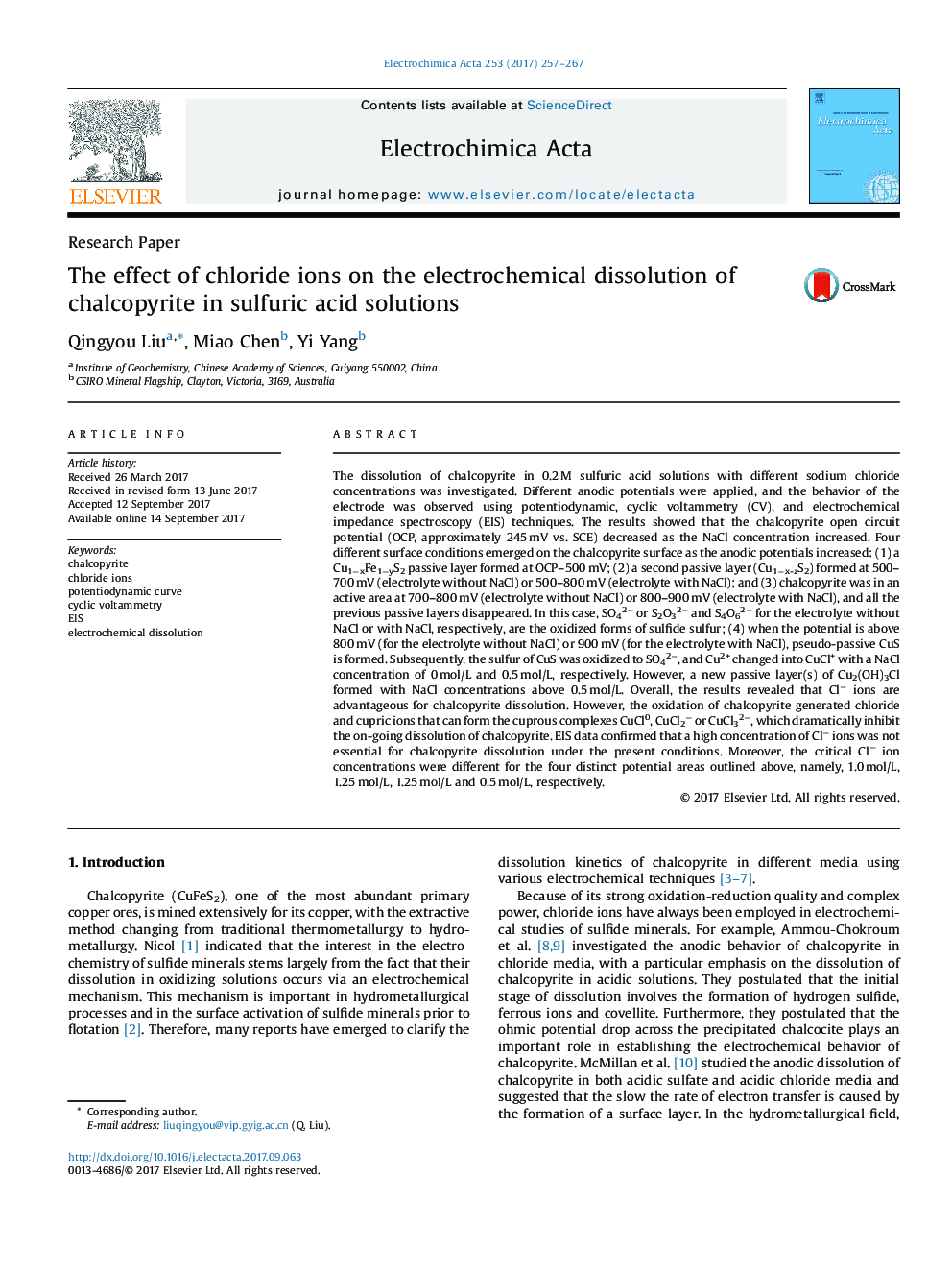| کد مقاله | کد نشریه | سال انتشار | مقاله انگلیسی | نسخه تمام متن |
|---|---|---|---|---|
| 6470099 | 1424104 | 2017 | 11 صفحه PDF | دانلود رایگان |
The dissolution of chalcopyrite in 0.2Â M sulfuric acid solutions with different sodium chloride concentrations was investigated. Different anodic potentials were applied, and the behavior of the electrode was observed using potentiodynamic, cyclic voltammetry (CV), and electrochemical impedance spectroscopy (EIS) techniques. The results showed that the chalcopyrite open circuit potential (OCP, approximately 245Â mV vs. SCE) decreased as the NaCl concentration increased. Four different surface conditions emerged on the chalcopyrite surface as the anodic potentials increased: (1) a Cu1âxFe1âyS2 passive layer formed at OCP-500Â mV; (2) a second passive layer (Cu1âx-zS2) formed at 500-700Â mV (electrolyte without NaCl) or 500-800Â mV (electrolyte with NaCl); and (3) chalcopyrite was in an active area at 700-800Â mV (electrolyte without NaCl) or 800-900Â mV (electrolyte with NaCl), and all the previous passive layers disappeared. In this case, SO42â or S2O32â and S4O62â for the electrolyte without NaCl or with NaCl, respectively, are the oxidized forms of sulfide sulfur; (4) when the potential is above 800Â mV (for the electrolyte without NaCl) or 900Â mV (for the electrolyte with NaCl), pseudo-passive CuS is formed. Subsequently, the sulfur of CuS was oxidized to SO42â, and Cu2+ changed into CuCl+ with a NaCl concentration of 0Â mol/L and 0.5Â mol/L, respectively. However, a new passive layer(s) of Cu2(OH)3Cl formed with NaCl concentrations above 0.5Â mol/L. Overall, the results revealed that Clâ ions are advantageous for chalcopyrite dissolution. However, the oxidation of chalcopyrite generated chloride and cupric ions that can form the cuprous complexes CuCl0, CuCl2â or CuCl32â, which dramatically inhibit the on-going dissolution of chalcopyrite. EIS data confirmed that a high concentration of Clâ ions was not essential for chalcopyrite dissolution under the present conditions. Moreover, the critical Clâ ion concentrations were different for the four distinct potential areas outlined above, namely, 1.0Â mol/L, 1.25Â mol/L, 1.25Â mol/L and 0.5Â mol/L, respectively.
Journal: Electrochimica Acta - Volume 253, 1 November 2017, Pages 257-267
